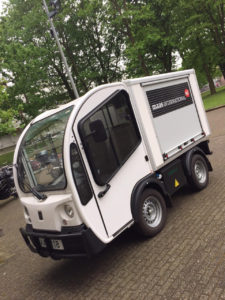To increase the benefits of a UCC in city logistics, the delivery to the final customers from the UCC can be done using light electric freight vehicles. These LEFV provide numerous operational benefits due to their smaller size while being more sustainable than regular light commercial vans.
LEFV’s have several operational limitations as well, mainly concerning their range and loading capacity. To successfully combine a UCC with LEFV, smaller inner city microhubs have to be added to the supply chain to provide forward bases of operation for LEFV. Goods are consolidated at the UCC, after which they are shipped to a microhub near the delivery area. From here, the LEFV’s carry out the final delivery to the customer.
In this paper by Nick Heijdeman from the Amsterdam University of Applied Sciences (project LEVV-LOGIC), the case of a coffee and vending machine supplier in Amsterdam was used to analyse the effects of using microhubs and LEFV.
This company already operates out of a UCC, in the research they added microhubs to the supply chain to see their effect. The results showed that using a microhub in the city, in conjunction with a UCC at the edge of the city, was financially more feasible scenario than just using a UCC and delivering directly from it using diesel vans. The case study concludes that to make a UCC financially feasible for urban deliveries, it needs to be used in conjunction with LEFV and microhubs.
Read the full case study here.

